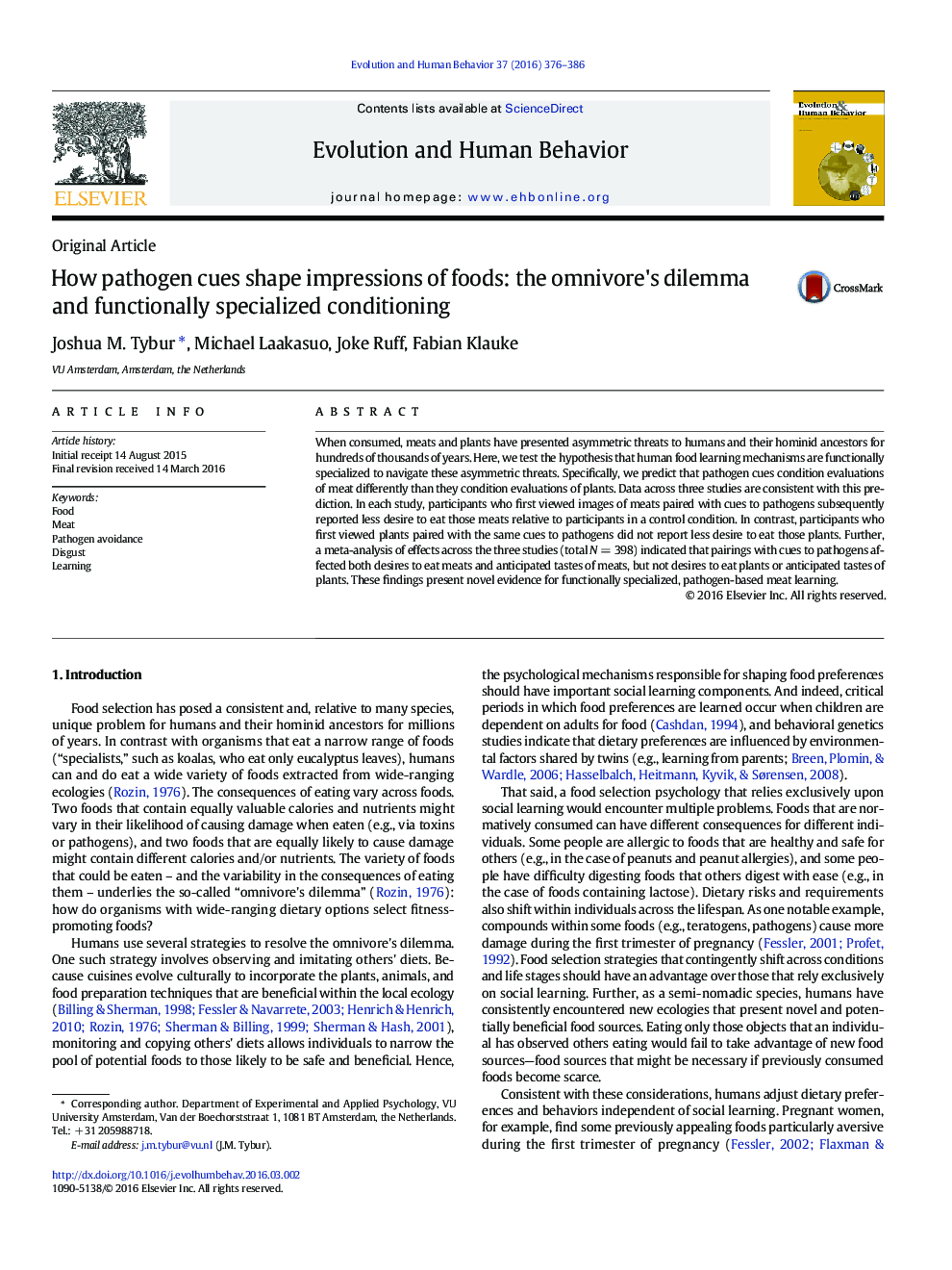| Article ID | Journal | Published Year | Pages | File Type |
|---|---|---|---|---|
| 5044833 | Evolution and Human Behavior | 2016 | 11 Pages |
When consumed, meats and plants have presented asymmetric threats to humans and their hominid ancestors for hundreds of thousands of years. Here, we test the hypothesis that human food learning mechanisms are functionally specialized to navigate these asymmetric threats. Specifically, we predict that pathogen cues condition evaluations of meat differently than they condition evaluations of plants. Data across three studies are consistent with this prediction. In each study, participants who first viewed images of meats paired with cues to pathogens subsequently reported less desire to eat those meats relative to participants in a control condition. In contrast, participants who first viewed plants paired with the same cues to pathogens did not report less desire to eat those plants. Further, a meta-analysis of effects across the three studies (total NÂ =Â 398) indicated that pairings with cues to pathogens affected both desires to eat meats and anticipated tastes of meats, but not desires to eat plants or anticipated tastes of plants. These findings present novel evidence for functionally specialized, pathogen-based meat learning.
